Tucked around Omaha are a series of communities that are currently being lost into the city as it grows and expands without limits. After studying lost towns in North Omaha, the histories of these towns seem fragile to me. I’m not going to look far and wide and write every small town’s history, but I do want to write this one. It begins with Mormons, keeps going with speculators and a dream called “Orient,” continues through the Union Pacific Railroad and gets delicious with long summer drives followed by ice cream. Somewhere in here there are schools, restaurants, wagoneers and saloons, a hardware store, a bank robbery and more. Recently, its included annexation and school mergers, highways and subdevelopments. This is a history of the town of Irvington, Nebraska.
The Union Precinct

All counties in Nebraska are carved into political areas called precincts or townships. In Douglas County, where Omaha sits today, there were precincts called Valley, Elkhorn, Jefferson, Union, Waterloo, Chicago, McArdle, Saratoga, and Douglas. Spread around the county, there have been towns like Florence, Bennington, Benson, Elkhorn, Dundee, Valley, Millard and Ralston. There were villages that disappeared, including Lane, Mercer, Elk City, and Gibson, as well as several lost towns in North Omaha specifically. This article is about a town that’s struggling against losing its identity called Irvington.
Since Douglas County was established in 1854 through the 1960s, the Union precinct had as many as six schools. It was home to the village of DeBolt, which had a small railroad station for switching cattle. Ranchers had settled in the area since the 1862 Homestead Act, and earlier than that. By far the biggest place in the precinct was Irvington.
Settling Papio, er, Irvington
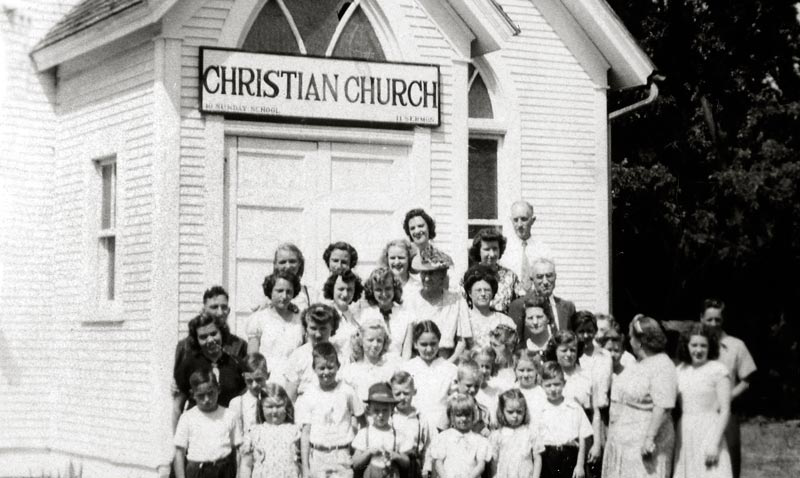
Around 1847, Mormons grazed their cattle along Papio Creek in the Irvington area and established a small village there. However, it didn’t last more than a few years, when the major Mormon emigration to Utah ended.
The village of Irvington, Nebraska, started slowly as a wagon stop for travelers on the Military Road from Omaha City to Fremont. Wagoneers would use the Papillion Creek to water their mules and horses, and riders could rest by the shady cottonwood trees along the bank. Eventually, the area grew to become a local commercial district. Starting around 1857, there was probably a dry goods store and perhaps a hotel. That same year, lots were drawn by speculators and a town called “Orient” was platted for the same area, but it was never developed. Around 1858, the government built a bridge over the Papio Creek when the Military Road became the primary path from Omaha to Pike’s Peak. Afterwards, the road carried the Colorado gold rush of 1859, and other events afterward.

In 1866, the Irvington Congregational Church was founded through the work of Rev. Rueben Gaylord. It served as a beacon in the community for the next century. The first parsonage was built in 1871, and the first church building was put up in 1871. It was moved in 1887 for the new railroad. In 1894, a tornado nearly demolished the church, and the Papio Creek flooded it, and a fire destroyed that building in 1936. A new building was finished the next year. The Plymouth Congregational Church in North Omaha merged with Irvington Congregational in 1960, and in 1965 other congregations joined. Today, the Northwest Hills Church, UCC is made of Irvington Congregational, Plymouth Congregational, Western Hills Congregational, and Central Park Congregational.

Starting in 1866, a locally important businessman and farmer was Frank Hibbard. His estate was called Evergreen Farm, and on his massive land holdings, he hosted more than 10 tenant farmers for many years. It was said that the massive evergreen trees he’d planted, including spruce, pine and cedars, grew stronger than any other forest in Nebraska.
In July 1877, the town established a post office, which meant there were enough homes and businesses around to justify one—although it didn’t take too many! Originally called Papio because of its place on the nearby creek, a nearby farmer named S. C. Brewster (who owned the mill) renamed it after his birthplace of Irvington, New York in the 1880s. Frank Hibbard agreed with this change and maintained it. The post office was located next to the bank at 6616 North 90th Street. After operating for 90 years, the post office closed in 1967. By 1880, the town had a general store, a school and its small Congregational church.
Other early leaders in Irvington included Luther Jewett Abbott, Charles “Old Man” Howe, and George E. Timme. Timme, who came to Irvington in the 1870s, farmed 160-acres outside town until he died in 1892. He also served as a county commissioner, and as chairman of that board.
The tiny town of Irvington had a change of fortunes in 1887, when the Fremont, Elkhorn and Missouri Valley Railroad built their line through town and established a depot there. Coming from DeBolt, the next stop was Arlington, Nebraska, more than 20 miles away. The Chicago North Western eventually came through the town, making it a three-way exchange serving Omaha, Blair and Fremont, and points beyond.
Building a Place

As early as 1897, the village of Irvington was cited as a potentially great city. That year, the Douglas County commissioners lobbied the Nebraska Legislature to set aside money to pave the Military Road across the entire state of Nebraska. They were content to have the road paved to Irvington that year, so that the village could begin growing to its potential. When the paving didn’t happen though, the village didn’t grow that much.
By the turn of the century, with its low rolling hills and subtle valleys, the shape of the surrounding land made Irvington an ideal area for houses, businesses and more. Two trains a day picked up and dropped off passengers, freight and mail at the Irvington Station. According to the newspaper, warehouses rose around the depot, which had a telegraph station. Stock pens formed a waiting room for cattle traveling by train to the Omaha stockyards.
Several other small businesses opened to serve the local farmers and ranchers who came to the railroad. Eventually, there were three three lines through Irvington. Local train expert John Peterson explained to me that they included:
- The Fremont, Elkhorn and Missouri Vally (FE&MV) railroad passenger trains;
- A line to South Omaha with a connection with the Union Pacific to reach Union Station, and;
- A line to the east through Debolt connecting with the Omaha Road in North Omaha.
In a show of its temper and virtuousness, in 1914 the village fought an incoming saloon. In a contested court case, the church fought with W.W. Williams and Son, who wanted to open a saloon near the church. During a report on the case, the Evening World-Herald noted that the village wasn’t incorporated, there was no police protection, and there wasn’t even a constable for the entire Union Precinct. Technically, he said, there was no jurisdiction to be responsible “for all the evils that would probably flow from it.” The same article said that the village was settled 50 years earlier “by New England people, and has retained its old customs and traditions. It has never had but one saloon, and that was put out of business within a year.”
Similarly, in 1916, a hotel in the village called the Irvington Country Club was closed by rumors, slander and malicious lies, according to its owner, George Brenner. He took local pioneer Frank Hibbard to court on charges that he maliciously broke the business. A local judge ordered the hotel closed until charges were settled. I could find no further reference to the hotel in the Omaha World-Herald.
The Laurentsen Hardware Store operated in Irvington from the 1920s through the 1950s. During that decade, the town had a bank, two feed mills, two churches, a filling station, an implement dealer and two blacksmiths. A dance hall was on the second floor of a tavern, and bands played there on Saturday nights.
The Irvington Bank

The State Bank of Irvington opened at 6612 North 90th Street in 1918. In 1924, it was held up by a group of 4 men who locked the cashier and a customer in the bank vault. $2,000 was stolen. A 9-year-old boy standing outside gave police “a good description of the robbers.” An Omaha policeman was implicated as the getaway driver, and his car was fingered as the one used.
In 1926, the bank was robbed again, this time by an overnight break-in. The robbers got $2,000 that time, too. It was robbed again two weeks later, but this time barely any money was gotten.
The bank was hit hard by the Great Depression and failed in July 1931. In 1934, the Nebraska Bank Department threatened suing the bank’s stockholders to sue for un-refunded deposits totaling $9,983. It took from 1931 to 1937 for the defunct bank to leave receivership and entirely close out. The building stood into the 1980s before it was demolished and replaced.
The Irvington School
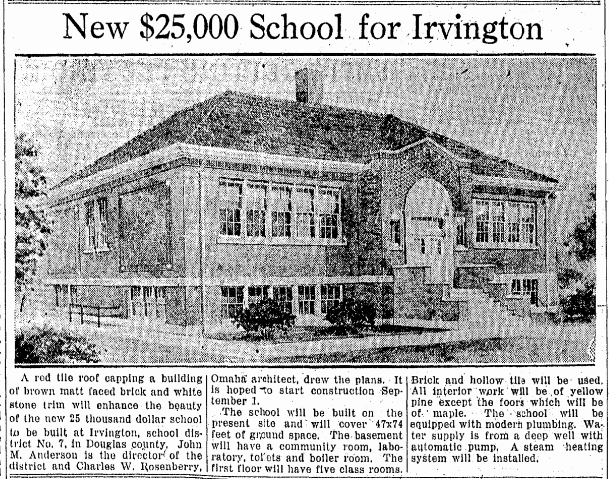
Opened in the 1870s, the original Irvington School was a one-room school house, and lasted from the 1880s through 1923. The second Irvington School was built in 1924, and was closed permanently in 1980. Learn more in “History of the Irvington School in Omaha” »
Incorporating Irvington
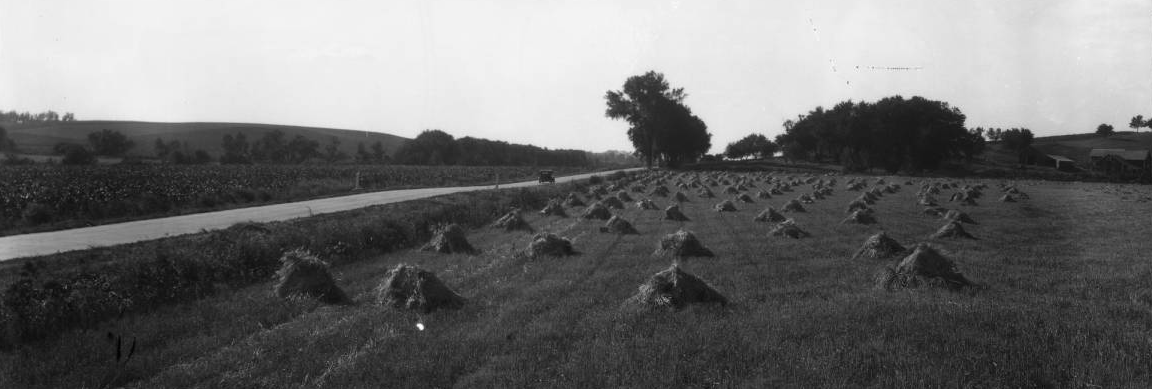
In 1940, the official population of Irvington was 146, according to the Omaha World-Herald. During this decade, people from Omaha began taking long drives from Omaha to eat Irvington Ice Cream. After operating into 1954, it was re-opened for a short time under another name and then closed permanently. The building still stands today though.
For a long time from the 1930s through the 1980s, the Omaha World-Herald quoted people talking about “Old Irvington” as the area’s name. This was to differentiate the original site of “East Irvington” from Irvington. East Irvington, aka Old Irvington, was near Crown Point Ave. and the Blair High Road. “New Irvington” was the community around present-day Irvington Road and Sorenson Parkway. Even though the two are less than a mile apart and that seems irrelevant today, historically it was important. Old Irvington was prone to flooding because it sat along the Papio Creek; New Irvington was built away from the creek on higher ground, and because of that it didn’t flood. During World War II, many of the Victory gardens in the community were washed away by a 1944 flood. Many of the old buildings in Old Irvington are gone now, including the Irvington Mill and Irvington Congregational Church.
William Ray Stevens, Zenis’s great-grandson, led a movement to change the name to Papio and incorporate the area in the 1950s. A local vote showed a lack of interest though, and Irvington was never incorporated.

In 1956, the Omaha World-Herald reported that two of the main businesses in Irvington were George Petros’s Velvet Rich Ice Cream, successor to the Irvington Ice Cream Company; and the Irvington Construction Company, led by Jack and Frank De Buse. Joyce Lumber Company moved into Irvington in 1962. Walter Green opened a hardware store in Irvington in 1954. Green was involved in a contentious court dispute with the county over a small road in the late 1960s and early 70s. He won the case and was awarded his land.
With the arrival of the nearby Interstate 680 anticipated, by the early 1970s a few people were preparing to build an industrial park in the Irvington area. That didn’t gain the momentum needed at that time though.
In the 1980s, Irvington was fluctuating in its steadiness, but definitely continued growing. The newspaper reported a list, including,
“lumberyards, feed mill, bulk gasoline plant, bar, alarm company, automobile parts store, contractors, glass company, plumber, car dealership, Omaha Public Power District office, wholesale distributor, automobile body shops, a towing company, C.B. radio shop, hardware store, paint store and automobile body shops.”
Old Irvington Today

Today, Omaha swallowed almost all of Irvington’s historical existence. There are a few small stores and some historical houses in the area. The Sorenson Parkway ripped into the area in the 1990s, and current suburban growth has surrounded the entire historic core of the village.
Irvington is surrounded by houses and apartments, accessed by I-680 and reliant on Omaha for work, church, and social activities. The area has Omaha mailing addresses; its served by the Omaha School District; and the Douglas County Sheriff’s Department responds to police calls. The Omaha City Council includes much of the area, including districts 1 and 7.
One of the last remnants of Old Irvington today was started in 1952, and is the volunteer Irvington Fire Department. It serves the town and the surrounding area. The Papio Creek continued flooding into the 1980s, when the nearby Lake Cunningham was built up to ensure water retention. However, the Peaceful Valley Mobile Home Trailer Park was established in Irvington along Thomas Creek in the 1950s. It continued being flooded for years after until Dam #10 was built upstream.
Mount Hope Cemetery on Military Road and Mount Sinai Cemetery on Crown Pointe Avenue are the nearest cemeteries, and many Irvington residents are buried there.
Today, Irvington is located at the junction of several major roadways in northwest Omaha. The Nebraska Highway 133 goes along North 90th Street into Irvington, where it intersects with the Blair High Road. The Irvington Road and Sorenson Parkway connect within the boundaries of the original village.
In the 1960s, Irvington was considered as a site for serious industrial development. When only light industry sprung up, in the 1990s the surrounding area started filling in with houses in earnest, and that process continues today.
I hope this community reclaims its historical heritage by identifying its historical sites, researching and writing more of its history and creating historical markers and other identification for the old village that was there. Only then can Irvington separate itself from the bland, boring suburban sprawl that’s encroaching on it…
Historical Tour of Irvington
These are some of the historical sites I could identify in or near the village of Irvington.
- Site of the Irvington State Bank, 6612 N. 90th St. (??)
- Former second Irvington School, 8920 Curtis Circle (1924-present)
- Former Papio Creek Bridge, west of Blair High Road and Crown Point Ave. (??)
- Irvington Ice Cream, ? (1940-1954); Velvet Rich Ice Cream (1954-??)
- Michka Grocery Store, ? (??-1948)
- Irvington Volunteer Fire Station, 9111 Fremont St. (1952-present)
- Irvington Hall, ? (??)
- Steam Shed, aka Irvington Station, 9414 Ida St. (??)
- Irvington Congregational Church, ? (1866-1965)
- Irvington Christian Church, 6800 N. 90th St. (1908-1972)
- Irvington Post Office, ? (1877-1967)
- Irvington Mill, approximately 8635 Military Rd. on the Little Papio Creek (??)
- Avark Inn, 6724 Irvington Rd. (1964-1987)
Thanks to Randy Hartge for his contributions to this article and to Roger Hasselquist for sharing!
You Might Like…
- A History of the Lost Towns in North Omaha
- A History of the Village of DeBolt
- A History of the Florence Neighborhood in North Omaha
Elsewhere Online
- Irvington Volunteer Fire Department official website
BONUS PICS!
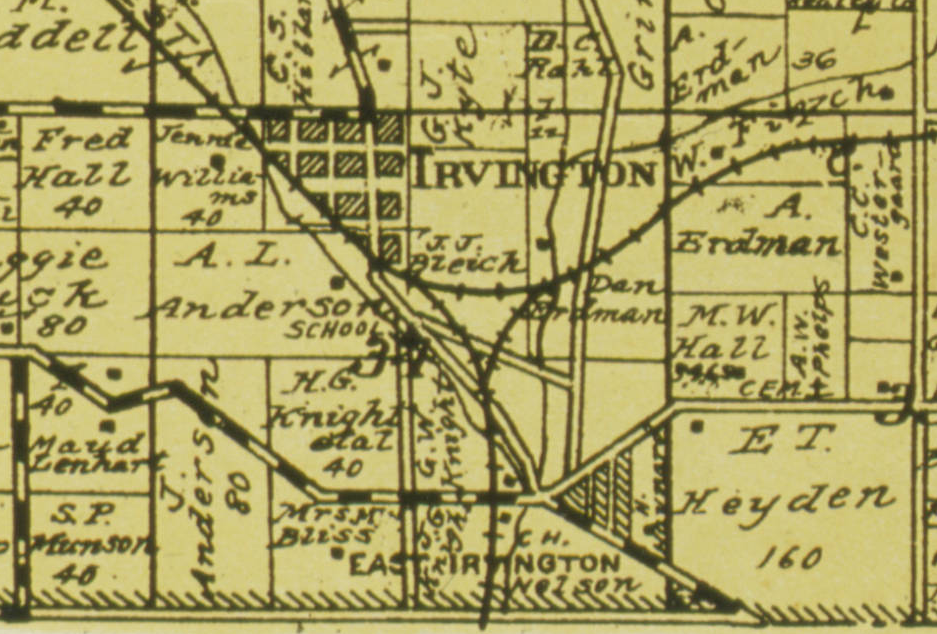

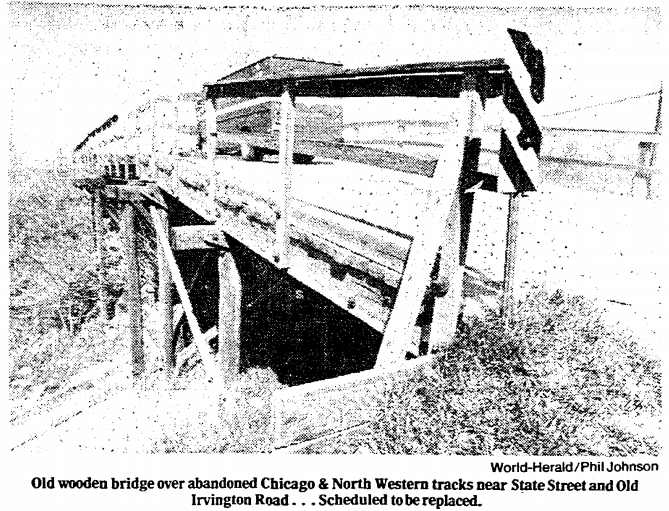
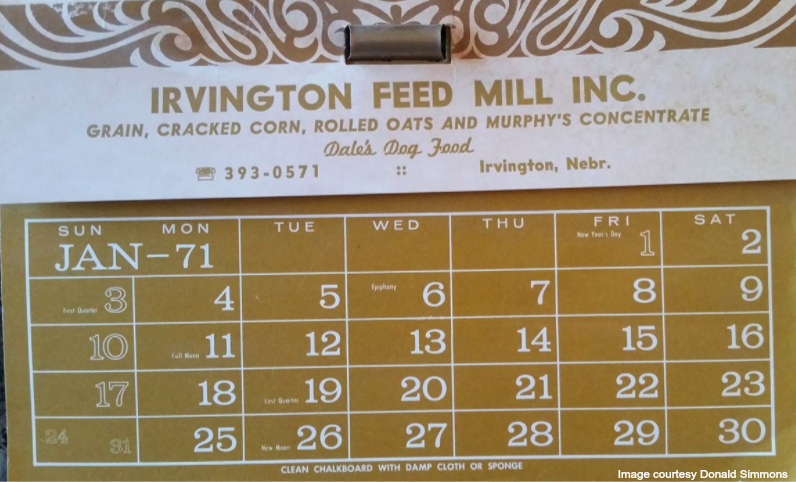


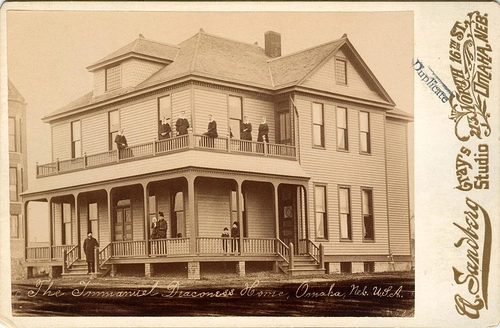

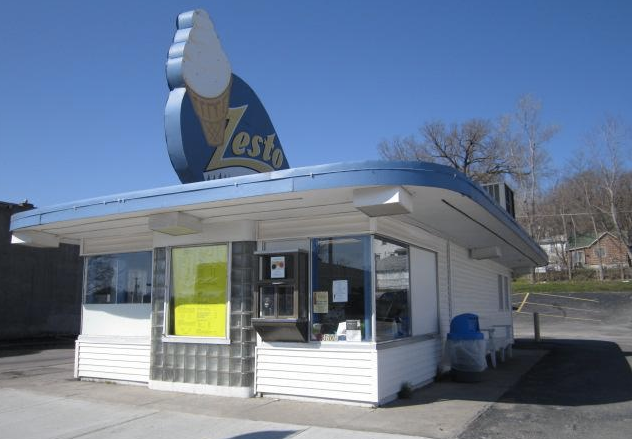
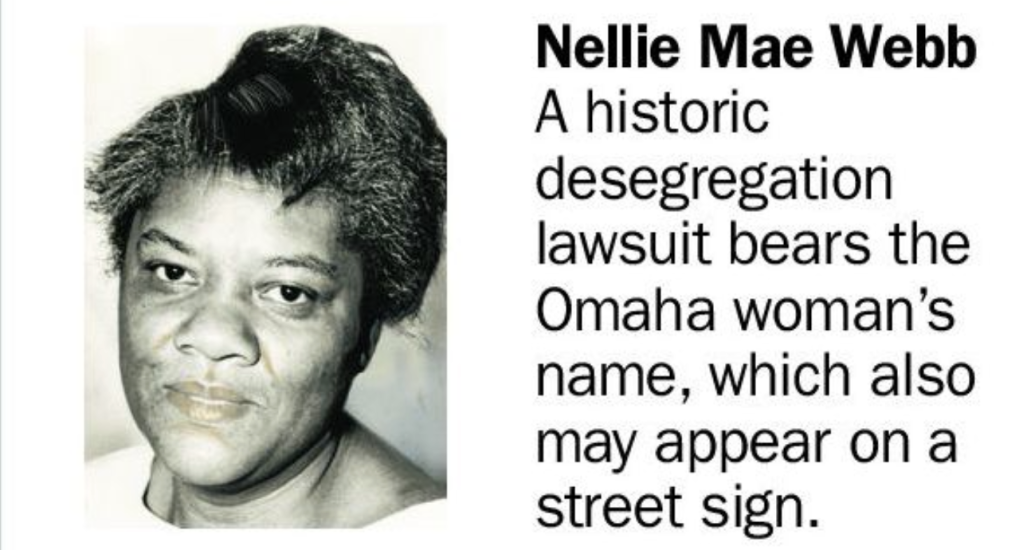
Leave a comment